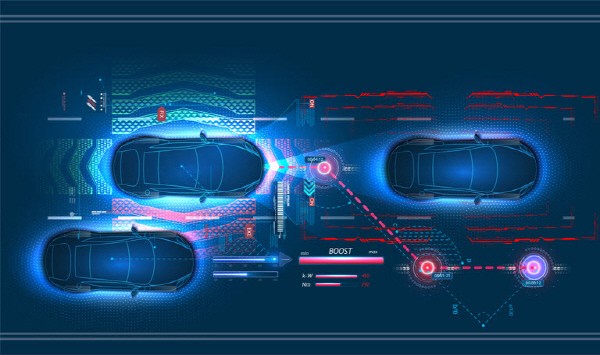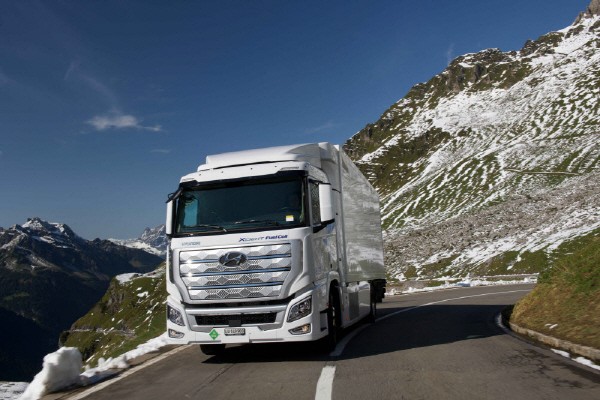<Gettyimagesbank> Hyundai Mobis has developed a technology that uses artificial intelligence (AI) to determine the expected driving route of nearby vehicles. It is a technology to improve driving stability by improving the completeness of the semi-autonomous driving function. It is expected that the application will be expanded starting with Hyundai Motor Group’s luxury vehicles such… Continue reading Hyundai Mobis develops AI-based motion prediction technology for surrounding vehicles
Tag: Mobility
Hyundai Motor creates an ‘independent brand’ for hydrogen commercial vehicles
Hyundai Motor will introduce its own independent brand that will promote commercial hydrogen fuel cell electric vehicles (FCEVs) similar to ‘IONIQ’, an eco-friendly vehicle brand. Hyundai Motor organized a marketing team dedicated to global hydrogen commercial vehicles under strategic support division, and started preparatory work, including creating a new brand. It is at the stage… Continue reading Hyundai Motor creates an ‘independent brand’ for hydrogen commercial vehicles
@Daimler: Stress-free travel to the mountains with the Setra
Stuttgart/Munich. Munich-based Geldhauser Linien- und Reiseverkehr GmbH & Co. KG is currently supporting a pilot project initiated by the German Alpine Club (DAV), with eight Setra double-decker coaches. The S 531 DT coaches take hikers and walkers to different stops in the Bavarian mountains, acting for the Munich & Oberland section of the DAV. The… Continue reading @Daimler: Stress-free travel to the mountains with the Setra
Japan automakers take bonding to next level
When Suzuki and Daihatsu decided to participate in a consortium involving Toyota, Isuzu and Hino last month, it marked yet another significant step by Japan’s automakers to deepen their bonding. Toyota is the lead participant in the latest drive with a 60 percent stake where the initial focus was to hone efforts on new trends… Continue reading Japan automakers take bonding to next level
Reinventing the Auto Expo
Anxiety levels were high last year too leading up to the Auto Expo 2020 at Greater Noida, near Delhi. The announcement did not come entirely as a surprise in the context of the pandemic but it is, perhaps, introspection time for the organisers of the Delhi Auto Expo. The key players here are SIAM (Society… Continue reading Reinventing the Auto Expo
China’s Geely Automobile first-half profit climbs 4% on recovery in sales
By Reuters Staff 2 Min Read BEIJING (Reuters) -China’s Geely Automobile Holdings Ltd warned on Wednesday of a potential short-term performance hit due to a global chip shortage and a resurgence in COVID-19 cases, but kept its annual sales target, betting on new product launches. FILE PHOTO: The Geely Automobile Holdings logo is pictured at… Continue reading China’s Geely Automobile first-half profit climbs 4% on recovery in sales
Brazil’s Kovi closes $104M Series B to make car ownership ‘more inclusive’ in LatAm
We sometimes take for granted that most anyone who wishes to become say, an Uber driver, can do so. But that assumption is a narrow view considering there are many people who would love to earn income in that way but can’t because of lack of car ownership (and all that goes with it) —… Continue reading Brazil’s Kovi closes $104M Series B to make car ownership ‘more inclusive’ in LatAm
S Korean online secondhand marketplace Danggeun Market raises $162m
South Korea’s Danggeun Market, the company behind secondhand marketplace Karrot, has raised $162 million in a Series D led by DST Global, the investment firm headed by billionaire Yuri Milner. Aspex Management and Reverent Partners joined the round while existing investors such as Goodwater Capital, Altos Ventures, SoftBank Ventures Asia, Kakao Ventures, Strong Ventures and… Continue reading S Korean online secondhand marketplace Danggeun Market raises $162m
SoftBank co-leads Chinese self-driving vehicle firm’s series B round
To date, Neolix has deployed and delivered nearly 1,000 autonomous vehicles in nine countries and over 30 cities worldwide. Go to Source
@VW Group: Tradition on a New Course003684
The DKV Mobility Services Group combines a rich tradition with a future-oriented course. Founded more than 85 years ago, it has helped shape the European mobility sector in farsighted ways. Today it is Europe’s leading B2B mobility services provider, trusted by small enterprises and major trucking operations alike. Taxi companies, doctors’ offices, gardeners, and bakers—anyone… Continue reading @VW Group: Tradition on a New Course003684


